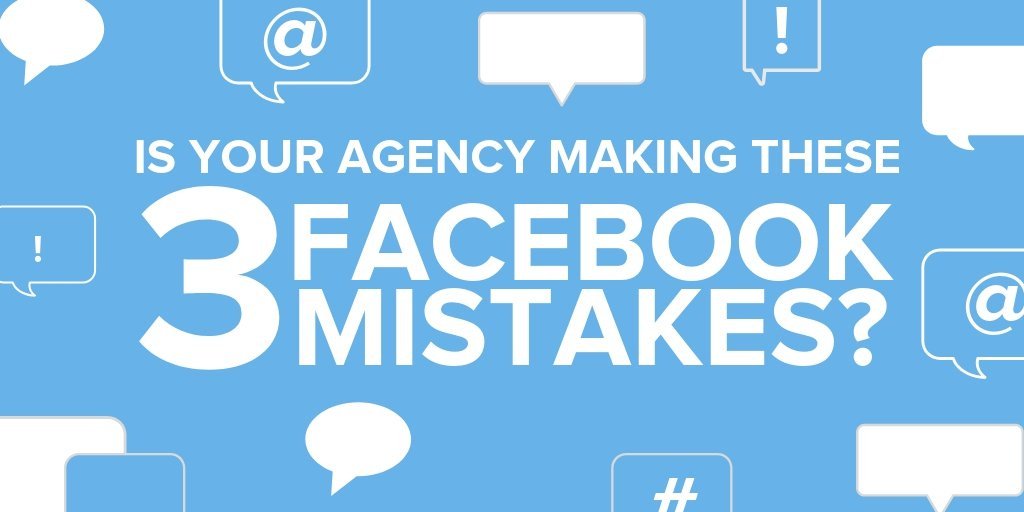Whether it's a complaint or a compliment, we're sharing best practices for handling customer service on social media.
Here at Glatfelter Insurance Group, we think about social media engagement like this:
If the person engaging with your brand was standing directly in front of you, complimenting or giving you constructive criticism, would you ignore them?
The answer is almost definitely 'no.'
When it comes to handling interactions on social media, treat your audience as if they were speaking to you in person. You may not be on social media all the time, or even everyday, but your audience will certainly take note of the way you reply and how quickly you respond. This is one reason that social media needs to be managed regularly by people who understand your consumers and the importance of excellent customer service.
With constant improvements to internet accessibility, would you believe me if I told you that the number of people going online is still increasing every day? It is. A Pew Research study has shown that over the last three years, internet usage among adults has risen by 5%. Your audience is on social media to connect, create and build a community with their favorite people and brands -- and when they communicate with you, they expect responses.
A JD Power survey found that 67 percent of online consumers use social media for customer support. They also noted that poor social media practices can negatively impact a businesses' bottom line and brand image.
Best practices for responding on social media
Responding to happy audience members:
If you're short on time and resources, you can always resort to a "like" or "favorite." A personal reply is far better received, but if you're facing time constraints you can at least let people know you appreciated their message. Happy audience members are fun to engage with, so get creative! You can use one or a combination of the response options listed below.
1. Recognize the compliment
The most obvious way you can do this is by saying thank you. You can respond in a variety of ways, but remember that this person has gone out of their way to recognize a great experience they had with your brand. You should try to match their enthusiasm. While "Thank you!" may suffice, consider personalizing the message — it can make huge difference!
2. Use that share button
It's there for a reason — and a positive review is a golden opportunity to share their comment, showing other consumers the positive post while simultaneously making the person feel appreciated. It can be a flattering experience when a brand shares your feedback, which only furthers their relationship with your company.
3. Express interest
Let's say you often work with fire departments to help them in their goal of better protecting their team. How can you express interest via your social media channels? Begin by liking and following the department's page. From there you can begin to engage with their content. Maybe they share their member's volunteer anniversary date or give a shout out when a new group of junior members begin their training. These are the moments you get to share on social media that you may not otherwise be a part of.
4. Learn from the compliment
If they've already posted about their experience, they're likely willing to talk about it further. Feel free to ask questions — this could be the perfect chance to learn more about what made them so happy and find out what your team is doing right! Try not to take up too much of their time. A simple question can help clarify exactly what went right and help you harness it again in the future.
On one hand you have happy people who are likely to engage with your brand on social media if you went above and beyond. On the other hand, if there was a problem or issue, people are likely to also share their experience online.
If a client has resorted to social media to get your company's attention, it's time to make things right.
Responding to unhappy audience members:
Responding to consumers via social media is always important but it takes on a new meaning when it comes to bad experiences. In the insurance industry, you may be handling extremely sensitive issues for the client. It's a delicate situation and has to be handled with the utmost respect and care. Here are our best practices for responding to negative posts on social media.
1. Don't delete the message
First and foremost, do not delete the post. This can be tempting, and in your mind it may seem like it's gone, but taking this action has potential to create an even larger issue. The poster will know that their comment has been deleted, which can cause angry backlash. What could have been taken care of easily has now been escalated. There is one exception to this rule, and that is to delete a comment or post if it contains harmful, offensive, illicit or profane language. In that case, you should delete the comment or post, block the user and report them to the platform. Almost all social media platforms have rules that warn against such behavior.
2. Respond A.S.A.P.
Responding to a negative comment online cannot be at the end of your to-do list. It's on social media, in the public eye for all to see. Social media moves quickly, so it helps to have people assigned specifically to monitoring social media. These team members should be well-versed in social media best practices. It doesn't hurt to have company guidelines created that can expedite the response process. Situations may arise where you don't have an answer to the problem, but addressing the issue and letting the user know their message has been heard can help prevent them from posting further. The main goal is to de-escalate the situation. Company guidelines can also help for unusual or difficult cases. For example, if the comment is threatening virality or legal action.
3. Privacy really matters
Get the conversation offline as quickly as possible. In our industry, it is paramount to make it clear that you can only discuss the issue further in a private format, whether it may be over the phone or through email. You can offer them contact information and let them know it's best to reach out privately, and that this request is for their protection.
4. Remember the golden rule
While the 'customer is always right' motto is not always true, you have to remember the golden rule. Treat others the way you want to be treated (yes, this kindergarten-level lesson has followed you into adulthood and online to social media). Remember, you're not just responding to the person who had a bad experience. You're talking to your followers, their friends and basically anyone else who is curious enough to see how it pans out. Keep this in mind when you think through your approach.
5. Create a thoughtful response
Personal attention speaks volumes. Once again, you have to walk the thin line of privacy matters but you can provide a personal tone and help them feel like someone understands.
6. Keep calm and post on
It's easy to be frightened by a negative comment or interaction on social media, especially when it pertains to your brand. Feedback is just a natural part of social media. It's not something to fear. Instead, you can view it as an opportunity to go above and beyond for a potentially under-served client. That comment may be your chance to educate and resolve issues, and provide a helping hand. Swooping in and guiding them through their struggle can bring a positive outcome to a negative situation.
By following these best practices, you have the opportunity to turn an angry customer into a loyal advocate and you also have the chance to directly interact with your brand champions. Let us know your best social media tips by commenting below!
DISCLAIMER
The information contained in this blog post is intended for educational purposes only and is not intended to replace expert advice in connection with the topics presented. Glatfelter specifically disclaims any liability for any act or omission by any person or entity in connection with the preparation, use or implementation of plans, principles, concepts or information contained in this publication.
Glatfelter does not make any representation or warranty, expressed or implied, with respect to the results obtained by the use, adherence or implementation of the material contained in this publication. The implementation of the plans, principles, concepts or materials contained in this publication is not a guarantee that you will achieve a certain desired result. It is strongly recommended that you consult with a professional advisor, architect or other expert prior to the implementation of plans, principles, concepts or materials contained in this publication.
This blog post may contain the content of third parties and links to third party websites. Third party content and websites are owned and operated by an independent party over which Glatfelter has no control. Glatfelter makes no representation, warranty, or guarantee as to the accuracy, completeness, timeliness or reliability of any third party content. References to third party services, processes, products, or other information does not constitute or imply any endorsement, sponsorship or recommendation by Glatfelter, unless expressly stated otherwise.
Related posts
When it comes to cybersecurity, the basics can go a long way.
With so much information online—it's comforting to hear from a real person with first-hand experience with a product or service before you make a purchase.
Here are five ways you can build, expand and strengthen your professional network on LinkedIn.








Submit a Comment